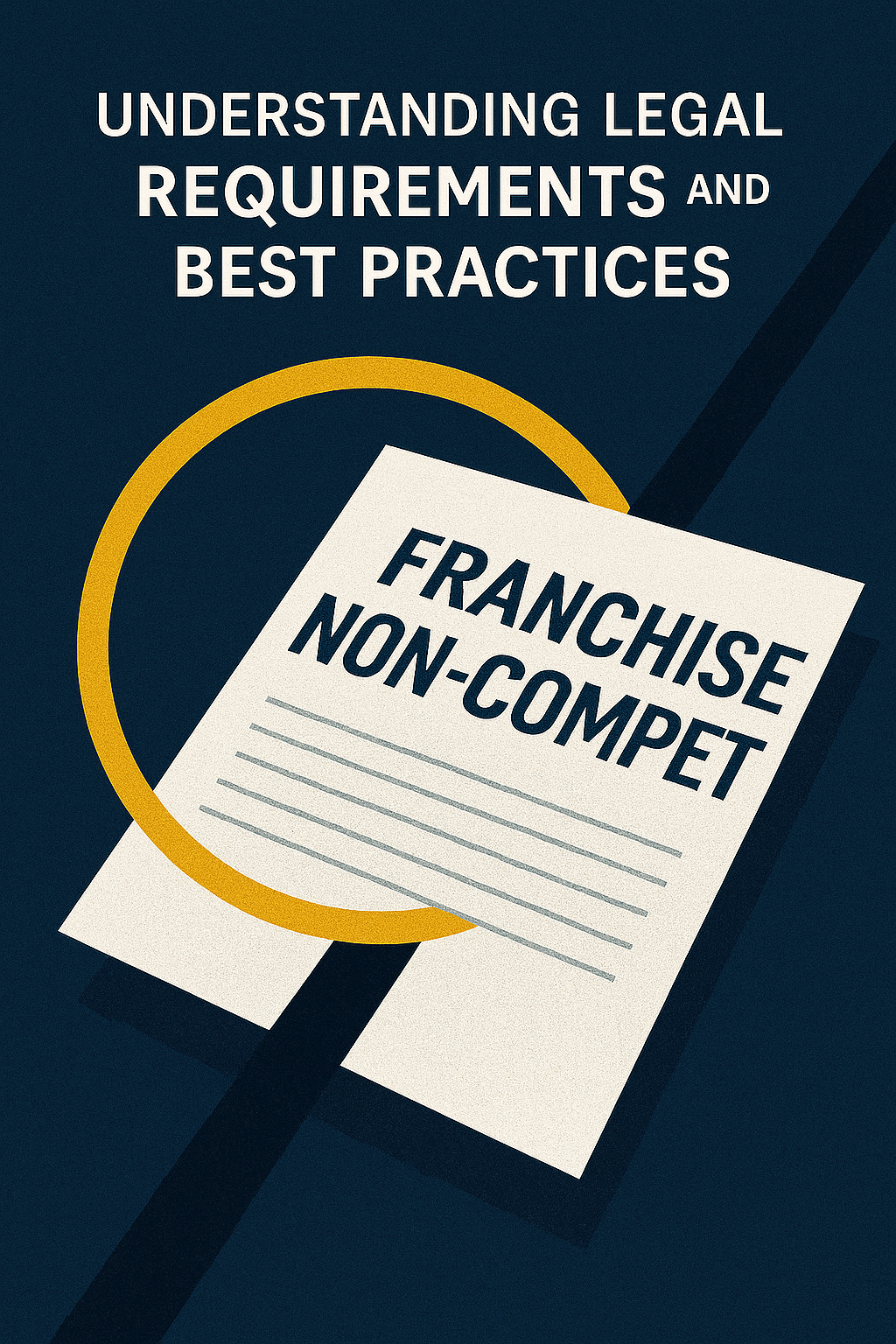Franchising in the optical goods industry is becoming an increasingly popular option for entrepreneurs looking to start their own business. With the numerous benefits it offers, such as established brand recognition, proven business models, and ongoing support, franchising can provide a solid foundation for success. In this article, we will delve into the advantages of franchising in the optical goods sector, the steps involved in starting your own franchise, the profit potential it holds, and the various franchise models available. Additionally, we will explore the importance of location, financing options, marketing strategies, training and support, legal considerations, and the trends and innovations shaping the future of franchised optical stores.
The Benefits of Franchising in the Optical Goods Industry
Franchising in the optical goods industry comes with several advantages that make it an appealing choice for aspiring business owners. One significant benefit is the established brand recognition. By joining an established franchise, you can leverage the reputation and trust already built by the parent company. This can significantly reduce the time and effort required to establish your own brand presence, as customers are already familiar with the franchise’s products and services.
Another advantage is access to a proven business model. Franchisors have spent years refining their operations to achieve success. By following their proven system, you can minimize the risk of failure and increase the likelihood of profitability. The franchise model provides a roadmap for everything from inventory management and store layout to marketing strategies and customer service.
Furthermore, franchising offers ongoing support from the franchisor. This support can come in various forms, including training programs, operational assistance, and marketing guidance. Franchisors understand the importance of the success of their franchisees, so they provide the necessary tools and resources to help them thrive. Being part of a franchise network also allows for networking opportunities with fellow franchisees, creating a sense of camaraderie and a support system.
How to Start Your Own Franchise in the Optical Goods Sector
Starting your own franchise in the optical goods sector requires careful planning and execution. The first step is conducting thorough market research and identifying the most suitable franchise opportunities in the industry. Look for franchises that align with your goals, values, and financial capabilities.
Once you have selected a franchise, the next step is to review the franchise agreement. This legally binding document outlines the rights and obligations of both the franchisee and the franchisor. It is crucial to understand all the terms and conditions before signing the agreement. If necessary, seek legal advice to ensure you are fully aware of your rights and obligations as a franchisee.
After signing the franchise agreement, you will need to secure financing for your franchise. There are several options available, including traditional bank loans, Small Business Administration (SBA) loans, and private investors. It is important to create a comprehensive business plan and financial projections to demonstrate the viability of your franchise and attract potential investors.
Once the financing is in place, you can proceed with finding a suitable location for your franchised optical store. Consider factors such as foot traffic, competition, demographics, and accessibility. A prime location can significantly impact the success of your franchise, so it is essential to choose wisely.
Next, you will need to undergo training provided by the franchisor. This training will equip you with the necessary skills and knowledge to run your franchise successfully. Take full advantage of the training programs offered and ensure that you understand all aspects of the business operations.
Finally, you can start setting up your franchised optical store. This involves hiring and training staff, ordering inventory, designing the store layout, and implementing marketing strategies to create brand awareness.
Exploring the Profit Potential of Franchising Optical Goods Stores
When considering franchising in the optical goods industry, it is essential to assess the profit potential of such ventures. Profitability can vary based on several factors, such as the location, market demand, competition, and the effectiveness of your operational strategies.
One of the key advantages of franchising in this sector is the potential for a steady customer base. Optical goods, such as eyeglasses, contact lenses, and sunglasses, are necessities for many individuals with vision correction needs. By providing quality products and excellent customer service, you can build a loyal customer base that generates recurring revenue.
Additionally, offering related services, such as eye exams and frame adjustments, can further enhance profitability. These services provide an opportunity for upselling and cross-selling, increasing the average transaction value, and driving higher profitability.
It is worth noting that profitability might take time to build, especially in the initial stages of the franchise. However, with a strategic approach, diligent management, and a focus on customer satisfaction, franchised optical stores can achieve a profitable and sustainable business model.
Choosing the Right Franchise Model for Your Optical Goods Store
When considering franchising in the optical goods industry, it is crucial to choose the right franchise model that suits your objectives and resources. There are several franchise models to consider, each with its unique characteristics.
The most common franchise model is the single-unit franchise, where the franchisee operates a single optical goods store. This model allows for focused attention and hands-on management, ensuring consistent quality and customer experience.
Alternatively, multi-unit franchising involves operating multiple optical goods stores within a specific geographic area. This model provides economies of scale and the potential for increased revenue and market dominance.
Another option is the conversion franchise model, where an existing independent optical goods store decides to join a franchise network. This model provides the benefits of brand recognition, operational support, and proven systems while allowing the store to retain its unique identity to some extent.
It is essential to carefully evaluate the pros and cons of each franchise model and choose the one that aligns with your long-term goals and capabilities.
Understanding the Franchise Agreement: What You Need to Know
The franchise agreement is a legally binding document between the franchisee and the franchisor that outlines the rights, obligations, and expectations from both parties. It is crucial to thoroughly understand the franchise agreement before signing it, as it governs the entire franchisor-franchisee relationship.
Key terms typically included in the franchise agreement include the franchise fee, royalty fees, territorial rights, duration of the agreement, renewal options, training and support obligations, marketing requirements, and termination clauses.
It is advisable to seek legal advice to review the franchise agreement and ensure that you fully understand its implications. A qualified attorney can help identify any potential pitfalls or unfavorable clauses that may impact your rights as a franchisee.
Top Optical Goods Franchise Opportunities in the Market
As the optical goods industry continues to thrive, several franchise opportunities have emerged in the market. It is important to research and evaluate the available options to identify the best franchise opportunity for your business goals.
Some notable optical goods franchises include LensCrafters, Pearle Vision, Vision Source, My Eyelab, and Stanton Optical. Each franchise offers unique value propositions, support systems, and brand recognition. Conduct due diligence and consider factors such as initial investment costs, ongoing fees, operational requirements, and growth potential.
Consult with existing franchisees and conduct thorough research to gain insights into the reputation and success rates of different optical goods franchises. This will help you make an informed decision and select the franchise that best aligns with your vision and goals.
Essential Steps in Setting Up a Successful Franchised Optical Store
Setting up a successful franchised optical store requires careful planning and execution. Here are some essential steps to consider:
1. Location: Choose a prime location that offers high visibility, accessibility, and foot traffic. Conduct thorough market research to identify areas with a high demand for optical goods and limited competition.
2. Store Design: Optimize your store layout to enhance the customer experience. Consider factors such as product placement, aesthetic appeal, and ease of navigation.
3. Staffing and Training: Hire knowledgeable and friendly staff who can provide exceptional customer service. Invest in comprehensive training programs to ensure all employees are equipped with the necessary skills to assist customers effectively.
4. Inventory Management: Maintain a well-curated inventory of optical goods that caters to the needs and preferences of your target market. Regularly analyze sales trends and customer feedback to optimize your product offerings.
5. Marketing and Promotion: Implement effective marketing strategies to create brand awareness and attract customers. Leverage both online and offline channels, such as social media marketing, local partnerships, and targeted advertising campaigns.
6. Customer Satisfaction: Prioritize customer satisfaction by offering personalized service, prompt responses to inquiries, and hassle-free return policies. Encourage customer feedback and use it to continuously improve your operations.
By following these essential steps and maintaining a strong focus on customer satisfaction, you can establish a successful and profitable franchised optical store.
The Importance of Location in Franchising Optical Goods Stores
Location plays a crucial role in the success of franchised optical goods stores. Choosing the right location can significantly impact foot traffic, customer acquisition, and overall sales performance.
Before selecting a location, conduct careful market research to understand the demographics, competition, and market demand in the area. Consider factors such as population density, age distribution, income levels, and proximity to complementary businesses such as optometrists or medical clinics.
An ideal location for an optical goods store would be in a high-traffic area, preferably near shopping centers, business districts, or medical facilities. Visibility and accessibility are key, as potential customers should be able to easily locate and access your store.
It is also important to analyze the competition in the area. While some level of competition can be healthy, an oversaturated market may make it challenging to attract customers. Look for locations with limited direct competitors or identify unique selling propositions that differentiate your store from the competition.
Ultimately, investing time and effort in selecting the right location for your franchised optical store can significantly contribute to its long-term success.
Financing Options for Opening a Franchised Optical Goods Store
Opening a franchised optical goods store requires adequate financing to cover initial setup costs, franchise fees, inventory purchases, and ongoing operational expenses. Here are some common financing options to consider:
1. Traditional Bank Loans: Approach banks and financial institutions to secure a business loan. Prepare a comprehensive business plan, financial projections, and supporting documents to demonstrate the viability of your franchise and your ability to repay the loan.
2. Small Business Administration (SBA) Loans: The SBA offers loan programs specifically designed for small businesses. These loans often provide favorable terms and lower interest rates, making them an attractive financing option for franchisees.
3. Private Investors: Seek potential investors who are interested in supporting your franchise venture. Present your business plan and financial projections to showcase the potential return on investment and secure the necessary funding.
4. Franchisor Financing: Some franchisors offer financing options to support their franchisees. This could involve deferred franchise fees, installment payment plans, or loans specifically tailored for franchisees.
Consider the pros and cons of each financing option and evaluate the terms, interest rates, and repayment schedules. It is essential to choose a financing option that aligns with your financial goals, risk tolerance, and long-term business plans.
Marketing Strategies to Drive Success for Your Franchised Optical Store
Implementing effective marketing strategies is crucial for driving success and attracting customers to your franchised optical store. Here are some strategies to consider:
1. Digital Marketing: Establish a strong online presence through search engine optimization (SEO), social media marketing, and paid online advertising. Create engaging content, share informative posts, and interact with your audience to build brand awareness and drive traffic to your website or store.
2. Local Partnerships: Collaborate with optometrists, medical clinics, and other healthcare providers in your area to form mutually beneficial partnerships. Cross-promote each other’s services and offer special discounts or incentives to attract new customers.
3. Referral Programs: Encourage satisfied customers to refer their friends and family to your store. Create a referral program that rewards customers for every successful referral. This can help generate word-of-mouth recommendations, which are highly influential in the optical goods industry.
4. Direct Mail Campaigns: Develop targeted direct mail campaigns to reach potential customers in your area. Consider offering exclusive discounts or promotions to incentivize them to visit your store.
5. Community Events: Engage with the local community by participating in events, sponsoring charitable causes, and supporting local organizations. This helps build a positive brand image and fosters a connection with the community.
Remember to track and analyze the effectiveness of your marketing efforts to make informed adjustments and optimize your strategies over time.
Training and Support: Key Elements of a Successful Optical Goods Franchise
Training and support are crucial elements to ensure the success of your optical goods franchise. Franchisors understand that well-trained and supported franchisees are more likely to achieve profitability and uphold the reputation of the brand. Here are some key aspects of training and support provided by franchisors:
1. Initial Training: Franchisors typically provide comprehensive initial training programs to familiarize franchisees with the operational aspects of the business. This includes product knowledge, sales techniques, customer service protocols, and store management procedures.
2. Ongoing Support: Franchisors offer ongoing support to their franchisees to address any issues, challenges, or questions that may arise during day-to-day operations. This support can be in the form of regular check-ins, field visits, and access to a dedicated support team.
3. Supply Chain Management: Franchisees often benefit from the established supply chain network of the franchisor. This ensures efficient and timely delivery of products, reducing the complexity of inventory management.
4. Marketing Guidance: Franchisors usually provide marketing assistance and guidance to their franchisees. This may include access to marketing materials, assistance in creating local marketing campaigns, and leveraging the franchisor’s national advertising efforts.
Make sure to take full advantage of the training and support provided by the franchisor. By leveraging these resources effectively, you can enhance your operational efficiency,






